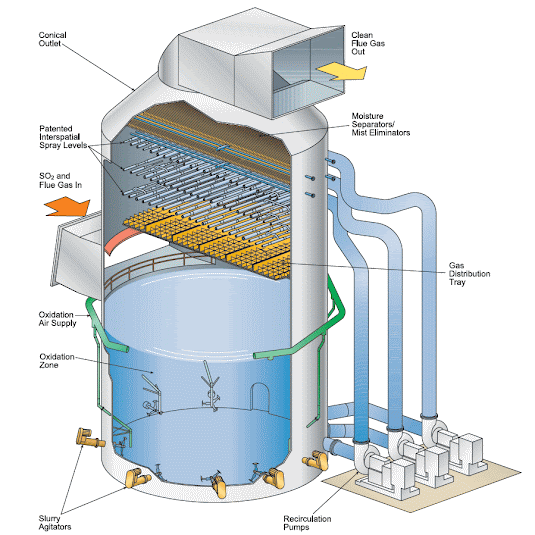PIPE SIZES AND MATERIALS
STANDARD PIPING SIZES
Piping is divided into three major categories:
• LARGE BORE PIPE generally includes piping which is greater than two inches in diameter
• SMALL BORE PIPE generally includes piping which is two inches and smaller in diameter
• TUBING is supplied in sizes up to four inches in diameter but has a wall thickness less than that of either large bore or small bore piping and is typically joined by compression fittings

The term diameter for piping sizes is identified by nominal size. The manufacture of nominal sizes of 1/8inch through 12 inches inclusive is based on a standardized outside diameter (OD). This OD was originally selected so that pipe with a standard wall thickness will have the inside diameter (ID) of the size stated. The 14 inch and larger sizes have the OD equal to the nominal pipe size. Pipe sizes ⅜ inch, 1 1⁄4 inches, 3 1⁄2 inches, 41⁄2 inches, and 5 inches are considered to be nonstandard and should not be used except to connect to equipment having these sizes. In these cases the line is normally increased to a standard size as soon as it leaves the equipment. Tubing is sized to the outside diameter for all applications and pressure rating is dependent on varying wall thicknesses.
Schedule (Wall Thickness)
Pipes are manufactured in a multitude of wall thicknesses, these have been
standardized so that a series of specific thicknesses applies to each size of piping. Each thickness is designated by a schedule number or descriptive classification, rather than the actual wall thickness. The original thicknesses were referred to as standard (STD), extra strong (XS), and double extra strong (XXS). These designations or weight classes have now either been replaced or supplemented by schedule numbers in most cases. Schedules begin with 5 and 5S, followed by 10and 10S, then progress in increments of ten through Schedule 40(20,30,40) and finally by increments of twenty to Schedule 160( 60,80,100,120,140,160). Wall thickness for schedule 40 and STD are the same
for sizes 1⁄8 to 10 inches. Schedule 80 and XS also have the same wall thickness for 1⁄8 inch through 8 inch diameter pipe.
Pipe ends
Pipe may be obtained with plain, beveled, or threaded ends. Plain ends (PE) are cut square and reamed to remove burrs. This type of end is needed when being joined by mechanical couplings, socket weld fittings, or slip-on flanges. Beveled ends (BE) are required for most butt-weld applications. Threaded ends (TE) are used with screwed joints and are ordered noting threads on both ends or one end (TBE or TOE).
1) PIPE MANUFACTURING
- SEAM LESS PIPES MANUFACTURING PROCESS
- SPIRAL PIPES MANUFACTURING PROCESS
STANDARD PIPING MATERIALS
Carbon Steel Pipe
Carbon Steel is one of the most commonly used pipe materials. The specifications that cover most of the pipe used are published by the American Society for Testing and Materials (ASTM) and American Society of Mechanical Engineers (ASME). Carbon Steel Material specification ASTM A106 is available in grades, A, B, and C. These grades refer to the tensile strength of the steel, with grade C having the highest strength. Common practice is to manufacture the pipe as A106 Grade B.
ASTM A53 is also commonly specified for galvanized or lined pipe or as an alternate to A106 . The testing requirements for A53 are less stringent than for A106. Three types of carbon steel pipe are covered by A53. These are type E or electric resistance welded, type F or furnace-butt welded, and type S or seamless. Type E and S are available in grade A and B, comparable to grades A and B of A106 .
Stainless Steel Pipe
Austenitic Stainless Steel pipe commonly referred to as "stainless steel" is virtually nonmagnetic. Stainless steel is manufactured in accordance with ASTM A312 when 8-inch or smaller sizes are needed. There are eighteen different grades, of which type 304 L is the most widely used. Grade 316 L has high resistance to chemical and salt water corrosion, and is therefore used in applications where this characteristic is needed. The "L" denotes low carbon content and is best suited for welding. Larger sizes (8 inches and up) of stainless steel pipe are covered by ASTM A358. Extra light wall thickness (Schedule 5S) and light wall (Schedule 10S) stainless steel pipe is covered by ASTM A409 .
Chrome-Moly Pipe
Chromium-Molybdenum Alloy Pipe is commonly referred to as "chrome-moly". Ten grades of this type pipe material are covered by ASTM A335. Appropriate grades of chrome-moly pipe are sometimes used in power plants applications requiring good tensile property retention at high temperatures, especially when the added corrosion resistance of stainless steel is not required. Chrome-moly pipe is used extensively in heat exchangers. Special care must be exercised when fabricating or welding this material, since it must be annealed (stress relieved) after being joined.
Plastic Pipe
Thermoplastic Pipe is commonly referred to plastic pipe and is categorized into two principal groups.
Thermoplastic pipe is available in a great variety of plastic compositions including:
• Polyvinyl chloride (PVC)
• Polyethylene (PE)
• Acrylonitrile-butadiene-styrene (ABS)
• Polyamide (nylon)
• Polypropylene
Concrete Pipe
Concrete Pipe is made from a mixture of portland cement, sand, gravel, and water. It is manufactured as:
• Plain (unreinforced)
• Reinforced concrete pipe
• Prestressed concrete pressure pipe
The usual method for joining this pipe is by bell and spigot ends. The spigot end of one pipe is inserted into the bell of the mating piece, then the joint is sealed with mortar or a joint compound. It may also have a provision for a rubber gasket to seal the joint.
Nickel and Nickel Alloy Piping
Nickel and Nickel Alloy Pipe has a great resistance to alkalis such as caustic soda and potash. Nickel and nickel alloys are sometimes used for high temperature applications. Inconel, Incoloy, and Monel are commonly used nickel alloys.
Special Piping Applications
Other piping materials such as plastic lined, glass lined, concrete lined, and steam jacketed are utilized in special project applications.
























































Follow Us
“Science is about knowing, engineering is about doing.”